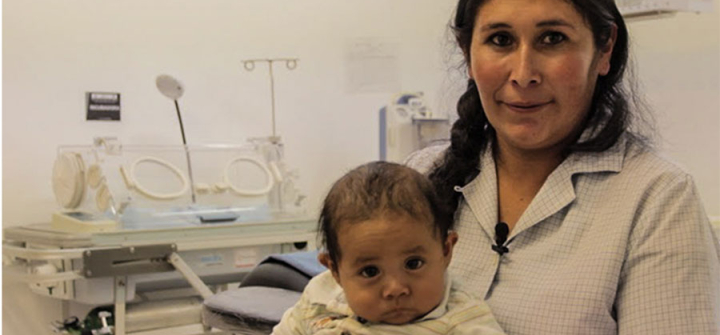Saving Lives at Birth Starts with Quality Care, Everywhere
After decades of effort by the global health community and governments, more women are giving birth in health facilities than ever, and maternal and newborn mortality have declined since 1990.
But global and country-level averages hide a tragic, more complex story: Even in countries where 80% of births take place in health facilities or are attended by skilled health workers, maternal mortality often remains high.
Many of these deaths could be prevented. In the 81 countries with the highest maternal and neonatal mortality rates, well-functioning health systems would prevent 520,000 stillbirths, and save the lives of 670,000 babies and 86,000 women by 2020—even at current rates of access to maternal and newborn health services, according to the November 2018 report from The Lancet Global Health Commission for High-Quality Health Systems.
Yet women and newborns continue to die from treatable birth-related complications such as hemorrhage, hypertensive disorders, neonatal asphyxia, and infection—with devastating consequences for families and communities. Providers often fail to adhere to evidence-based guidelines, or perform post-partum checks for problems like infections and abnormal bleeding.
As the Lancet Commission report points out, increasing access to health services alone is not enough to achieve sustainable progress. In fact, contrary to the prevailing approach of urging women with low-risk pregnancies to give birth at the nearest clinic—which is often unprepared to effectively recognize and manage complications—the commission calls on health system managers to refer all deliveries to hospitals with the infrastructure and highly skilled staff needed to provide emergency surgery and specialized care.
However, increasing deliveries in hospitals brings different challenges and risks. A 2018 meta-review found that the farther away a woman is from an obstetric care facility, the less likely she is to make use of it. Hospital deliveries make sense when complications are likely, but countries like Burkina Faso and Uganda—where 71% and 77% of the population live in rural areas, respectively—would be hard pressed to ensure that all women travel to and deliver safely at a hospital.
And, for women referred beyond their communities, hospital deliveries can interrupt the continuity of antenatal care they receive from their local health facility.
Instead, we need to ensure that skilled care is available when and where women need it, and appropriate to the local context. For example, specialized health centers equipped to provide emergency obstetric and newborn care are the norm in many parts of the world, and some offer comprehensive emergency care, such as C-sections, anesthesiology, and neonatal resuscitation. Some countries are also directing more resources to strengthen professional midwifery-led models. Mexico, for example, has state-funded midwifery schools.
Other countries are stationing skilled health providers in communities and improving referrals by partnering with local organizations and private transportation providers.
These activities should not be a stretch; after all, many governments have pledged to achieve universal health coverage, which by definition includes affordable access to effective services across populations—including vulnerable and hard-to-reach groups.
To reduce maternal and neonatal mortality, health systems must promote patient-centered respect, dignity, and accountability. As the Lancet Commission report rightly emphasizes, people must value and trust the health system. They must be empowered to demand quality care, freedom from discrimination, and respect for their privacy and dignity—regardless of where they deliver. Women might travel farther and spend more money for compassionate, safe care, but they shouldn’t be forced to travel for low-quality care.
The millions of dollars and decades of hard work that the world has dedicated to maternal and newborn health delivered an obvious lesson: We can’t oversimplify and broadly apply maternal and newborn health blueprints across every setting. Women have a right to evidence-based, quality care that meets their needs, no matter where they live, and countries must find the will to provide it.
Jacob Hughes is a Senior Technical Director and the Health Systems Practice Lead for Management Sciences for Health, a nonprofit global health organization.
Please join the thousands of subscribers who rely on Global Health NOW summaries and exclusive articles for the latest public health news. Sign up for our free weekday enewsletter, and please share the link with friends and colleagues: http://www.globalhealthnow.org/subscribe.html
Iginia Badillo delivered her child at Huasca Health Center under the care of midwifery interns supported by the FCI program of MSH. Image: Pablo Romo, Courtesy of Management Sciences for Health




